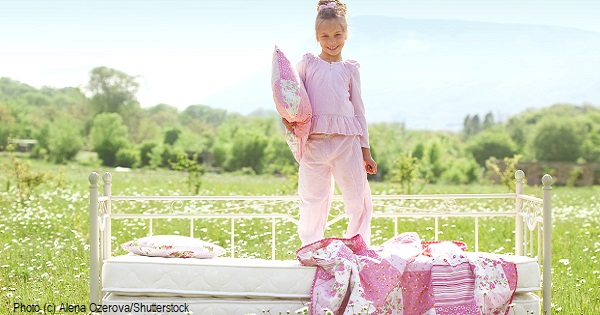|

Safe Sleep, Sustainable Slumber
By Leslie Fischer
These environmental claims could be tricking you into thinking you are buying an organic mattress for your child.
Flame retardants, toxic adhesives, and pesticides: These are only a few of the questionable additions you will find in conventional mattresses. Many eco-minded parents choose an organic mattress for their children to be sure they do not aspirate these toxins. As environmental values become more mainstream, mattress companies try to capitalize on this movement by labeling their products as “eco-friendly.” Specious environmental claims run rampant in the mattress industry. The following four claims about mattresses are often associated with greenwashing.
1. “No PBDEs”: These flame retardants were ubiquitous in home furnishings for many years but were found to be a neurodevelopmental toxin and cause a slew of other health issues in humans. As of January 1, 2008, products containing PBDEs could no longer be sold in the USA. They are also restricted under the Stockholm Convention. So if the product you are purchasing has been produced in the USA, you can be confident it does not contain PBDEs and labeling it as such means they are just adhering to the law.
2. “No Ozone-Depleters”: Chlorofluorocarbons are onerous substances that are known to deplete the ozone. Like PBDEs, these are already illegal in the USA and most other parts of the world.
3. “No Heavy Metals”: This claim is often made about the foams that many couches, chairs, and mattresses contain. Foam, a light and fluffy substance, rarely contains metals like lead and mercury. Lead is something that you should be concerned about when purchasing an older home, but it is not something you are likely to find in foams.
4. “Touting the environmental qualities of just one material used in a home furnishing”: Many products that claim to be eco-friendly actually contain only one organic ingredient. While this is a step in the right direction, it doesn’t necessarily mean that the entire product is environmentally-friendly. Many so-called green mattresses are actually conventional mattresses that have an organic cotton cover.
How does a consumer discern whether a home furnishing is actually the most sustainable choice? Look for third party certifications; these organizations test a finished product for key environmental concerns. However, you cannot trust every certification program. You must do your research ahead of time. Some of the most trusted seals are USDA Organic, Greenguard Gold, and Eco-Institut. When you purchase something with an environmental seal that you can trust, you can feel good about your purchase for years to come.
Leslie Fischer is the founder of Sustainable Slumber, a website dedicated to helping people get a good night’s sleep. She reviews organic mattresses, writes about sleep, wellness, and eco living and is on the hunt for the most comfortable mattress.
|

